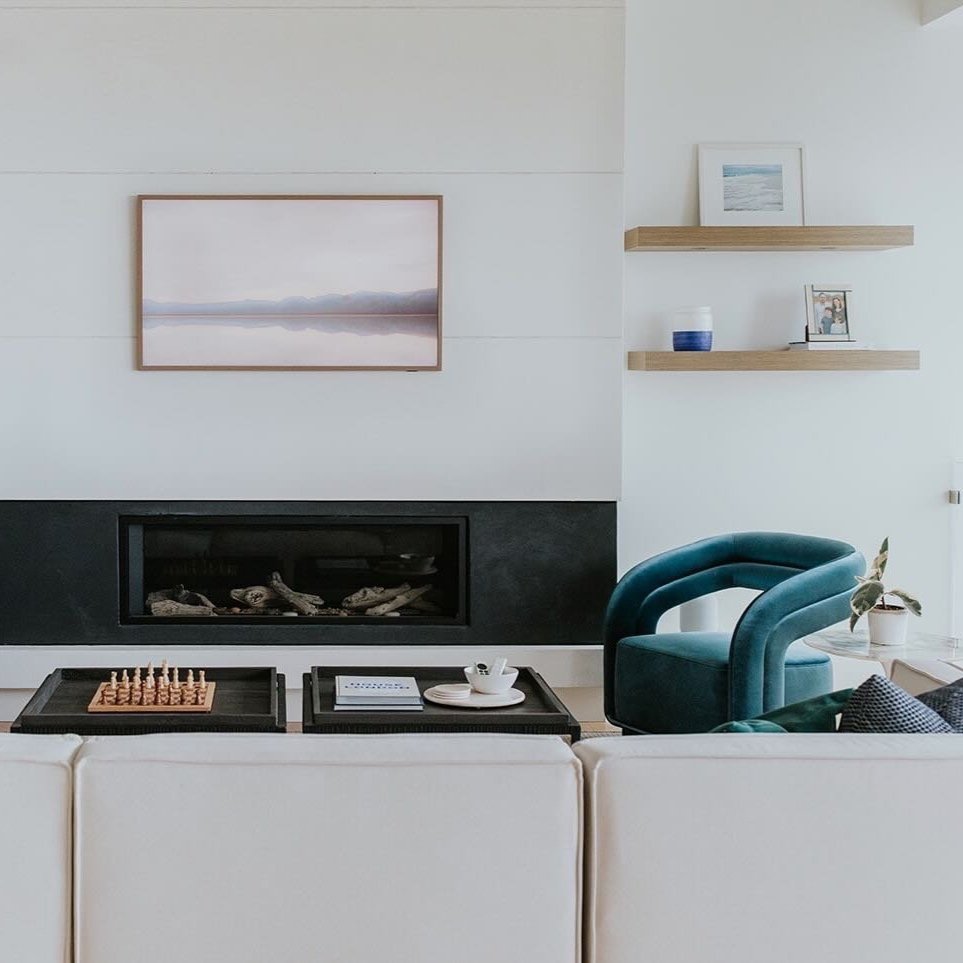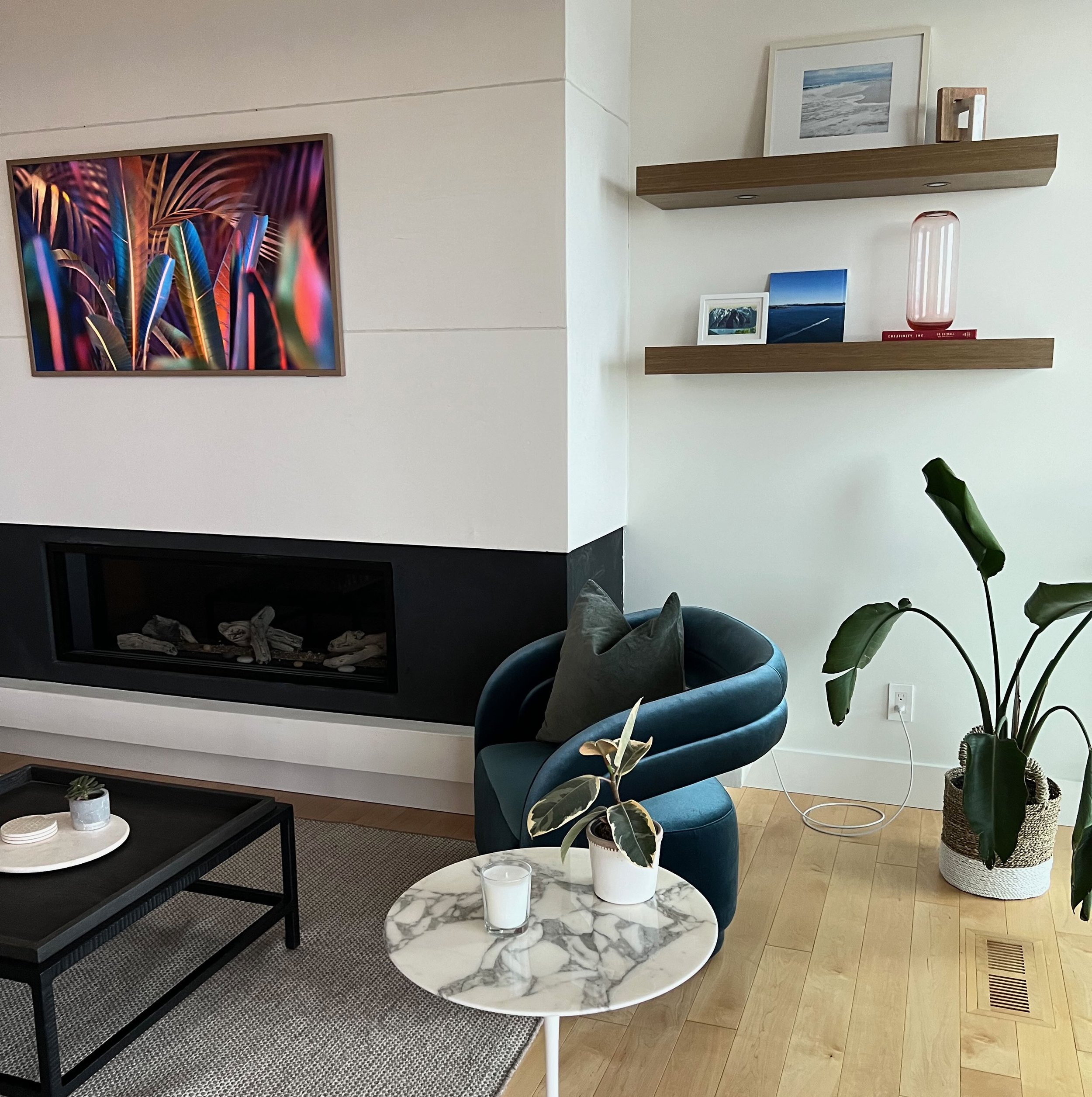Takeaways From A Clutter-Core Vs. Clutter-Free Experiment
Cluttercore has piqued my interest recently. As someone who has embraced clutter-free living, following a long history of sentimentality around my things, I’ve been curious to understand the popularity of a more sentimental, more is more, approach…What is cluttercore and what’s the appeal? And what does it tell us about what people are gravitating towards (or away from) in their spaces?
I believe understanding the relationship between our things and our space through the lens of cluttercore can enhance our approach to organizing and design so I decided to experiment in my home.
Firstly, what is cluttercore?
Cluttercore is a type of maximalist aesthetic, and a break from minimalism to surround yourself with collected things that are nostalgic, sentimental, and meaningful. It involves densely filling a space with belongings that are often eclectic and contrasting in a visually stimulating way. Cluttercore has the psychological effect of helping you tap into inspiration and creativity. It’s artfully arranging what you have and love, intentionally embracing organized chaos and imperfection in favour of rich personality, while creating a lived-in and cocoon-like feel that you may even find to be serene. While a cluttercore space may feel cluttered to an observer, the care that goes into curating the high volume of items means your own cluttercore space won’t feel ‘cluttered.’
As a professional organizer I’ve helped curate several spaces over the years with sentimental individuals who I’d say in retrospect went from cluttered to cluttercore. It was a matter of sorting items into those worthy of display, consolidating other keepsakes in bins and boxes, and parting with anything outgrown. Most people don’t intend to part with anything at the start of these sessions (in fact, most accepted my help at the urging of a family member) but we typically still end up with surprising amounts of garbage, recycling, and donations. These newly curated spaces have been offices or sometimes kids’ rooms, places where people are free to express themselves, taking comfort in showcasing their treasured belongings.
Because I lean towards minimalist interiors, cluttercore is quite the stretch for me.
What is the minimalist aesthetic Cluttercore is breaking from?
Minimalism as an aesthetic, is about reducing a space to the essentials for a streamlined look and feel. Light, form and beautiful materials are key to creating a minimalist aesthetic that shines. This type of serene space limits distractions and allows the focus to be on something other than the details of the space (the people or the view for instance). Clean lines, neutral spaces, and more open spaces define minimalist interior design.
The appeal of this less is more approach is the sense of calm and simplicity. Many city-dwellers and families enjoy the contrast of a calming, lower-maintenance retreat as a backdrop to their busier lives. The minimalist design style often incorporates hidden storage solutions into the structure so utilitarian items can be tucked out of sight, and sentimental items are either stored as keepsakes or selectively and sparingly incorporated into the overall design.
That leads me to my personal challenge…
In an effort to experiment with a style so different from my own, and intrigued by the stated sense of serenity and coziness that an abundance of nostalgic and sentimental items can emanate, I challenged myself to attempt a cocoon-like feeling through styling our living room shelves with an abundance of meaningful items. Unlike clients who truly had an abundance of things that we edited for a cluttercore aesthetic, I started by filling the shelves with a bunch of collected items we had on hand, then sorted and edited to achieve the desired feel. I wouldn’t call the result cluttercore, given all the peeling back of layers and layers. I did succeed in doubling the number of items styled on my shelves from its previous state (from 16 to 32 at the time I’m writing this) and I ended up with a look that was slightly more lively, playful and personalized.
So what’s the allure of cluttercore and what needs does it serve?
The experiment helped me appreciate several reasons for Cluttercore’s modern day appeal and fit within different people and spaces. I’m sharing what I learned here from my research and experimentation as a fresh lens for approaching your next project.
There’s a psychological benefit to displaying meaningful things. Consider how you want to feel in different areas of your home and if any of your belongings or collections have that effect on you to determine what to display and where. Also think about whether you lean to a more restrained approach or want to be surrounded by a high volume of particular items? Alternatively, are those feelings evoked without stuff and rather through particular spaces (interiors or nature) you’ve seen or been?
Colour is a powerful tool to impact the feel of a space. While cluttercore may be a backlash to grey or beige minimalist interiors in part, it’s helpful to think about where you enjoy injecting colour into your space, and which colours you’re drawn to or want to avoid. There are endless ways to use colour in various styles of spaces from bringing pops of colour into your space, to going all out with colour drenching.
Your organizing style matters when designing a space. Cluttercore lends itself to the visual types, as opposed to hidden. Would you prefer to see your items in plain sight, on open shelves or counters, or tucked inside cabinets out of view? Proponents of visual organizing often keep essentials on counters as a way to reinforce habits or simplify routines since they consider out of sight to be out of mind. Hidden organizers, on the other hand, don’t need to see all their individual items to use and enjoy them so would do well with minimalist or other forms of maximalist interior design.
A place for everything and everyone. Regardless of a home’s overall aesthetic, in shared households you’ll want to take into account needs and styles of individual members and guests to support the vibe and activities that will make people feel at home. You can define spaces big or small for each household member to incorporate personal belongings cluttercore-style: entire rooms, closets, designated shelves, bulletin boards, or even garages.
Give your passions and collections their rightful place. From LEGO creations to wardrobes and art to vintage finds, it’s important that your space planning accounts for any large, treasured or important collections. First consider whether you want them on display, tucked away for safe-keeping or perhaps a combination.
Cluttercore enlivens spaces through stuff, reminding us of the value of rhythm and movement in design. There’s a sense of liveliness that is celebrated in cluttercore that captures an important, often overlooked dimension in the types of minimalist spaces people are tiring of: the sense of rhythm and movement from the arrangement of furnishings and decor to the way light and shadows move through the space.
Cluttercore, like minimalism, moves away from fast homeware. Cluttercore honours personal and often salvaged things as treasures rather than disposable goods, curated over time with more eclectic items. Minimalism takes a less is more approach and also limits consumption to the essentials and special statement pieces.
Owning vs renting will factor into your design choices. Cluttercore may appeal more to renters or people who frequently move because all the pieces can move with you. When you’re building a large custom home for family or retirement, or buying a condo, you’re more likely to look to feature walls, custom built-in storage, custom window coverings or other design details to achieve your desired feel.
People want their homes to be more forgiving of everyday messes. When a space incorporates all the visual interest of Cluttercore, your eye isn’t drawn to the imperfections or messes. It’s also true that many design choices can help limit the feeling of clutter in harder-working areas like kitchens, mudrooms, laundry rooms and playrooms, while still allowing a sense of openness and simplicity where you are more likely to want to relax such as living rooms and dining rooms.
As a decorator/designer with a specialization in professional organization, I am here to help your household navigate these functional and aesthetic considerations to establish a space that fits your belongings and lifestyle in a way that expresses your personality, reflects your style and achieves your desired feel. I am drawn to streamlined spaces where people’s individual passions and personality can shine through smart space planning and thoughtful curation of furnishings and accessories. I love meeting new people to assess your needs and determine how I can help. Contact me anytime.



